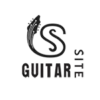Joe Pass is perhaps my all time favorite straight ahead jazz style guitar player. At solo guitar, he was absolutely untouchable and his single line playing was masterful beyond words.
only managed to meet him and hear him live only once, at the Lighthouse in Hermosa Beach California over 20 years ago. I regret not seeing him again before he passed on in 1993. Following, is some of the online information available on Joe Pass. I have chosen a short bio (Courtesy of Telarc International at http://www.telarc.com/), and two sites that contain a great deal discography information, pictures and personal remembrances of Joe Pass.
This week we continue our historical series and feature guitarist Joe Pass.
Joe Pass Bio:
Born Joseph Anthony Passalaqua in New Brunswick, New Jersey, in 1929, Pass grew up in a Pennsylvania steel town during the Great Depression. His Sicilian-born father, Mariano, made it a family goal that his children would not have to follow his footsteps into the steel mill. Young Joe, impressed by the six-string-slinging cowboy of the silver screen, Gene Autry, received his first guitar from a family friend, and started playing when he was nine years old. Soon he found himself practicing seven or eight hours a day. Joe’s father could sense the budding talent in his son and pushed Joe to practice from books, radio, records, and tunes that were whistled around the house. Teaching himself scales and practicing them until they were second nature, Joe became as facile with the guitar as some boys are with a baseball bat. “You have to have the instrument in your hand till it feels like an extension of yourself,” he told interviewer George Clinton, “and for me holding the guitar for seven hours a day-and hating it, did just that.”
By the time he was 14, Joe was playing parties and dances with a small string combo. His early guitar influences were the gypsy phenomenon Django Reinhardt and the great Goodman discovery, Charlie Christian. Others such as Tal Farlow, Barney Kessel and Jimmy Raney would also leave their impression on Pass, but Reinhardt, Christian, and later, Wes Montgomery, remained the “big three” in his pantheon of guitar inspirations. Pianists of the 1940s and ’50s-especially Bud Power, Al Haig and Art Tatum-and wind players, Charlie Parker and Coleman Hawkins and trumpeter Dizzy Gillespie, became models of improvisation for Pass as well.
During that period, Pass had migrated to New York and was gigging around town. As with many beboppers of the era, the jazz life took its personal toll on Pass and in 1960, after miscellaneous touring, a relocation to Las Vegas, and some time off from the scene, Pass moved to Los Angeles. He became an active studio player, working with such artists as Julie London and Frank Sinatra, before re-emerging in 1962 with his first album, Sounds of Synanon. From his new home base in Southern California, Pass worked with many West Coast groups, including the bands of Bud Shank, Gerald Wilson, Bobby Troup, Clare Fischer, Earl Bostic, Les McCann, and others. For two years he toured and recorded with pianist George Shearing.
Leonard Feather called Pass “the most exciting new talent on jazz guitar to emerge since Wes Montgomery came to prominence in the 1950s.” But it was producer Norman Granz, who first heard Pass in 1970 and signed the guitarist to the Pablo label in 1973, who brought this “new talent” to international prominence. Pass won a Grammy in ’74 for The Trio, which he recorded for Pablo with Oscar Peterson. A steady schedule of performing and recording dates with Peterson and Ella Fitzgerald, as well as collaborations with the likes of Benny Carter, Ray Brown, Niels-Henning, Orsted Pedersen, Milt Jackson, Count Basie, Herb Ellis, Jimmy Rowles, Zoot Sims, Roy Eldridge and Duke Ellington made Pass one of the most active and acclaimed modern jazz guitarists. His extensive Pablo catalog includes tributes to Ellington, Parker and Fred Astaire.
In addition to his increasing number of club dates, Pass was in demand for regular tours of Europe and became a mainstay at major jazz events from the North Sea Jazz Festival in The Hague, to counterparts in Montreal, Toronto and California. With each passing year, his projects became more varied. On a recent European trip, Pass recorded with the Vienna String Quartet and played six cities in Italy with Danish bassist Pedersen and alto saxophonist, Lee Knits.
His favorite context, however, remained the solo guitar, and the classic songs and jazz standards. Pass’ mastery of his instrument was such that the challenge was no longer one of technique, although we can still marvel at the way he supplied his own bass lines and chords while devising single-note solos, but one of interpreting the song in new and meaningful ways. (bio courtesy of Telarc International at http://www.telarc.com/)
Doc Dosco is a jazz guitarist, composer and audio consultant living in Los Angeles, CA. His website is located at http://www.docdosco.com, where you can find more information on the ‘What’s Hot in Jazz Guitar’ columns, audio clips of Doc’s playing, and many additional features. Doc plays Heritage guitars and endorses the new Pignose Valve Tube Amps — great for jazz (and anything else!)
